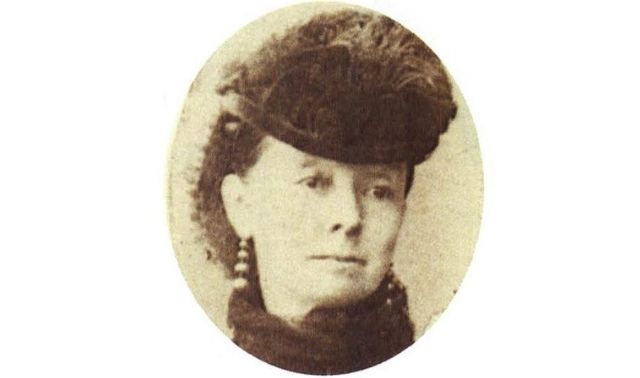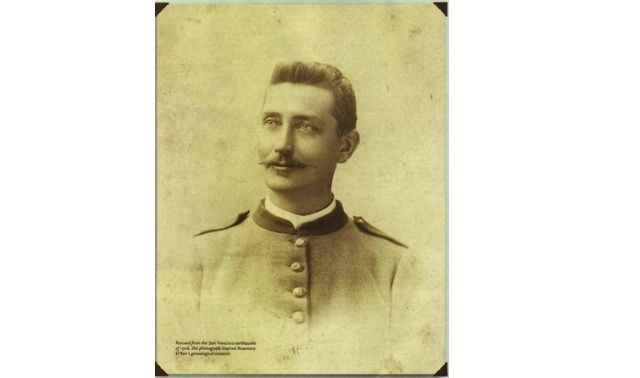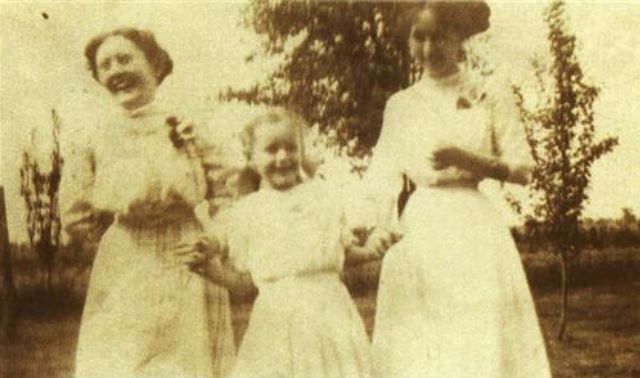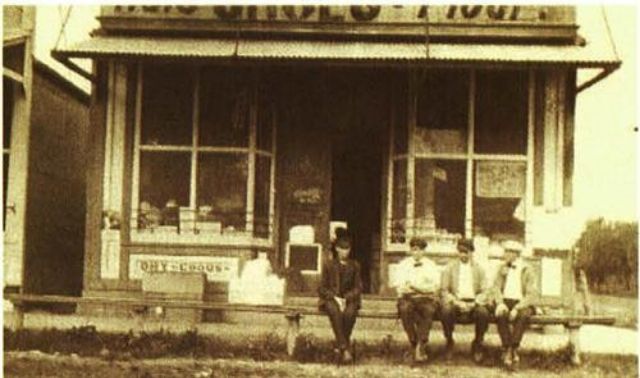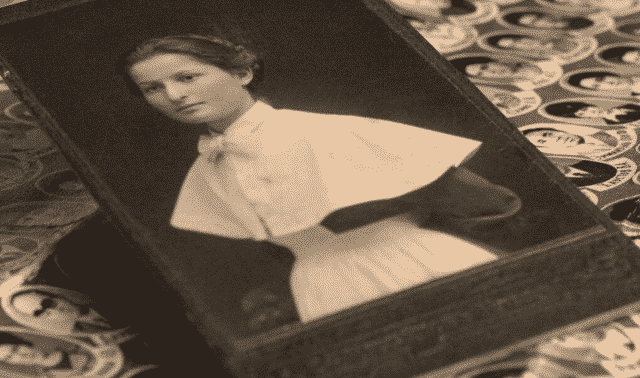Do you believe that one photograph can really help you with your family history? For all the skeptics out there, the answer is yes.
In two previous articles in Family Tree Magazine, “Picture Puzzles” (August 2000) and “Getting the Picture” (April 2001), I offered advice on identifying family photographs and building a photograph collection: talk with relatives, do your research and use online resources. Does that simple three-step approach work? In the magazine and in my online photo-identification column at Family Tree Magazine, I asked readers to send me photo success stories. An amazing number of you responded.
If you don’t believe that those three simple steps can lead you to photo-identification and family-history breakthroughs, just listen to what your fellow readers have to say. Some of your stories are downright spooky — Stephen King novels have nothing on genealogical research! Some readers told how a single image led to new family discoveries; others recounted how they found whole new picture collections.
Let’s look at some of the ways that readers have reconnected with their family photographs, sometimes with the help of Family Tree Magazine:
A Union suit clue
After Robert Stroud found a photo of his wife’s third-great-grandfather dressed in a Grand Army of the Republic (GAR) uniform, he decided to investigate. The GAR was a Civil War veterans group, and the family had indeed long had an oral tradition that his wife’s ancestor, John Moore, had fought for the Union.
Stroud knew that researching Moore would be difficult, especially after he found more than 800 John Moores listed for the Union army. “Eventually, I narrowed it down (via the website Civil War Data) to a much smaller pool of veterans who were from Iowa, survived the war, and did not have a middle initial other than the one I knew was his.” A relative saved Stroud from reviewing all the records one at a time, mentioning some old documents that might be helpful. One of those documents just happened to be John Moore’s discharge papers, which had sat in a drawer undisturbed for more than a century. Without the clue in that old photo, of course, Stroud would never have started on the trail that led to the details about his wife’s third-great-grandfather.
Putting a face on a legend
The photo that launched Rosemary U’Ren on her long-distance genealogy quest was an unidentified picture she’d inherited from her grandmother. The photo had been rescued from the 1906 San Francisco earthquake and fire — but who was it? Two years ago, U’Ren invested in a computer and a genealogy program to begin research on her family. Her first year of searching led her to her “mother’s mother’s relatives in Switzerland.” She also tracked down a couple of “lost cousins in California.”
But it was that unidentified photograph that really inspired her. A caption on the back identifies the image as possibly her grandfather, John F. “Fred” Spereisen (aka Sperisen). His life was a family legend. Apparently born in Switzerland about 1856, he immigrated to the United States as a child. He later ran away from home, lied about his date of birth by as much as 10 years and joined the US 7th Cavalry. U’Ren has been trying to verify the details of her grandfather’s colorful story.
With the help of volunteers in Marshalltown, Iowa, she found a Sperisen family there in the 1870s and 1890s, but they were too old to match. She then decided to locate obituaries for the family and discovered the missing piece of information: Her grandfather had taken the surname of the man who raised him, Urs Sperisen Jr.
Now U’Ren is trying to track down the rest of the family and identify her other family photographs — all springing from her curiosity about that photo. “I must say this story has me hooked,” she adds. “I have been learning so much about Marshalltown, Iowa, that I will have to go there. I want at least to visit the burial place of the Sperisens there and pay respects to the people who raised my grandfather and even moved to California with him.”
Waist not, want not
Sometimes one photo can help solve the mystery of another, as Rita Werner learned trying to identify three women in an old family picture.
Her dad’s cousin had sent her a group of photographs of her grandfather’s family from the early 1900s. Werner immediately recognized one of the women in these new photos from her mystery photo, because of the woman’s tiny waist. “The women are from my grandfather’s side, not my grandmother’s as I had suspected,” she says. “The woman on the left in both pictures is my great-grandma, Adah (Whitaker) Brown, born in 1880. The woman on the right is her sister, Dessa Mae Whitaker, born in 1885. The child in the original pictures is my grandpa Brown’s only sister and my great-aunt, Dessa Mary Gerzella (possibly Grayzel) Brown.
“Now when I look at her with fresh eyes,” Werner adds, “I can see the resemblance to my grandpa! Gerzella was born in 1904. So now I know that it’s Gerzella holding onto her mother’s and aunt’s hands.”
Online matchmaking for missing pictures
In recent years, people have turned to the Web to identify old photos and reunite “missing” pictures with their families. Joe Bott, for example, merely collected old photographs until a personal crisis led him to develop Dead Fred, a website dedicated to reuniting people with their lost photographs. At first, he posted images only from his own collection, but users asked if they could upload their own “mystery images.” The result is the two-year-old Dead Fred’s online photo reunion site, which attracts more than 20,000 visitors daily.
One woman wrote to Bott about a photograph on the Web site of a young couple in Texas, taken in the 1890s: The picture showed her great-grandparents, whom she’d never seen a picture of. Just in case there are other relatives out there looking for the same pictures, Bott requires proof of the relationship and a waiting period. To date he’s given away 20 actual photos — which may not sound like a lot, but imagine if you were one of the 20! Each of those people wrote to him to express their joy at finding pictures of their ancestors.
Wired wedding photo
About the same time Bott launched his site, Family Tree Magazine‘s website began requesting photographs in need of identification. One of the first people to respond to this new feature was Jackie Hufschmiclt. She sent in a simple picture of a young couple. She had no idea who they were. Her mystery picture appeared both online and in the magazine. Imagine her reaction when not one but several people contacted the editors seeking additional information about her photo. All either owned an exact copy of the picture or had seen it before. While Hufschmidt and her newfound fellow researchers continue to unravel this mystery, it appears that the photograph may be associated with a wedding and that some of the people owned the picture because their relatives attended the event.
Globe-trotting photos
The Internet can also connect you to family photographs located around the world. A woman in New Zealand contacted Lindsay Lloyd in England to find out if she would be interested in a photo album she had. Turns out the woman was related through her husband’s third-great-grandparents, who’d immigrated to New Zealand. First, Lloyd verified the relationship by using the 1881 census for England and sorting out who all the people were in the album. She stumbled over one unusual name: How could this man possibly fit into the family? “Apparently he had been a godfather to the New Zealand woman’s great-great-grandfather,” Lloyd says. “These very same people had also owned our house when it was built 150 years before. We had no idea of a family connection when we bought it, but now a photo of the original owner is hanging there!”
Storehouse of knowledge
Sharon McKenzie and her mother had painstakingly identified the photos in her mother’s mother’s photo albums — all but 70. Stumped, McKenzie turned to the Web. She scanned the 70 mystery pictures and put them online, along with posting what she did know about them on RootsWeb.
One of the images was of an unidentified store. McKenzie knew it must have been somewhere in Nebraska and was probably from the late 1800s or early 1900s. Thanks to the Web, she soon received a note identifying the town as Glenvil, Neb., and information on who owned the store, when the business was established and even details on the first item sold. All this data came from someone who wasn’t a relative, but who knew the family and was able to put McKenzie in touch with some distant cousins.
Worth a thousand words
Of course, the Internet isn’t the only way for people to meet through photographs. Marcia Melnyk, author of The Genealogist’s Question & Answer Book (Betterway Books) and The Weekend Genealogist (Betterway Books), says that a newspaper story about her greatgrandfather’s grave marker led to new discoveries. The article was picked up in several local papers and included a photograph of her great-grandparents in front of a house. She then received a letter from a man who said he remembered her greatgrandfather and grandfather. They agreed to meet, and when Melnyk arrived she discovered that the house the man lived in was the same house as in the photograph.
“I was excited to realize that I was sitting in the very room that shows behind my great-grandparents in the photo,” she recalls. The man knew both of her greatgrandfathers and was able to tell stories about them. “This once-forgotten photograph has thus far produced two living cousins of my mother’s and a firsthand account of my great-grandfather and his participation in the Memorial Day parades, as well as information about the locations of his residences.”
Giveaway prizes
Sometimes, when it comes to old photos, it really is better to give than to receive — because then you receive many times over in return. Marci Stevens donated a single image of her mother and aunt, labeled with their maiden names, to her local historical association. Four months later, a researcher contacted her looking for living descendants of her maternal grandfather. From this one contact, Stevens’ “new” family began sending her other pieces of her past. Two cousins sent her copies of their family history research and another gave her all the documentation for a Daughters of the American Revolution application. Since her mother didn’t want to talk about Stevens’ grandfather’s family, everything she learned was new information. Stevens marvels, “One photo did all that!”
Getting lucky
To the dismay of many of the rest of us, there are just plain lucky individuals who seem to stumble upon family photographs. Take Lynn Betlock, who’s been researching her family since she was a teenager. She has documentation for many of her family lines, but is still missing a few photographs. One day, she decided to type into a general search engine an unusual surname, Bares. To her surprise, she discovered not only another researcher working on the same family, but a photograph of her great-great-grandparents as well.
Another time, a simple question at a local historical society in Vermont led Bet-lock to a photograph of an ancestor, Maria Little Kendall, taken in 1865. Bet-lock happened to ask if the historical society staff knew of anyone else researching the Little family. They put her in touch with a woman in Vermont who turned out to have a photo album. Kendall had moved to Illinois as a young married woman and corresponded with her family back in Vermont about her life. Betlock owned her letters from the 1830s and 1840s, but never expected to find a portrait of Kendall. But she did — in the hands of a distant relative. Not all of her research has been this easy, but these two coincidences make most of us envious.
Airport connection
The most unusual photo success story we found was purely coincidental but reminiscent of suspense thrillers. Margo Wayman decided as a young woman to visit Scotland, the land of her birth. When trying to get home, she found herself stranded in the Atlanta airport. It was her first solo trip and she was broke, alone and jet-lagged. She began to cry. A stranger approached, asked whether she was all right and even bought her a meal. Wayman recalls: “I chatted away about my family, where I was from and why I had gone to Scotland. He told me his name, and finally, after six hours, we were able to board our flight. When the plane arrived at our destination, I wanted to tell him thanks, but he wasn’t on the flight. I found that odd, but went home and slept.
“A week later, a package came from Scotland. I took it over to my mother’s house as soon as I saw it was photos. We dumped the package out and started looking through them. She pointed out who each of the people were. She held one of them up and told me that here was a man whose picture she’d seen many times before but never knew who he was. I nearly passed out. It was the man from the airport! We looked up his name in our genealogy and there he was. Because of this, I had this great desire to find his family. I began researching and soon found his birth and all his family and went back dozens of generations. Photographs can make a difference!” Wayman has no idea why this man didn’t identify himself as family, but she’s grateful for everything he’s done.
Have I made a believer out of you yet? Most of these success stories are a combination of hard work and connections, with maybe a dash of luck. If you haven’t started looking for family photographs or trying to identify the ones you have, I hope you’re now encouraged to do so. There’s nothing like looking at your ancestor’s portrait and seeing a resemblance. You might even finally discover whom you look like in the family.
Photo-Reunion Sites
5 Steps to Success
Follow these steps to your own photo success stories:
- Show unidentified photographs to relatives.
- Research clues in the photographs: photographer’s name, clothing, props and captions.
- Post queries about the family (if you know the surname) on online message boards.
- Post your unidentified images online in a family Web page or a photo reunion site (see page 42).
- Leave contact information at historical societies where you find material on your family.
From the August 2002 issue of Family Tree Magazine

